Mimakigahara and
its panoramic views of the mountains
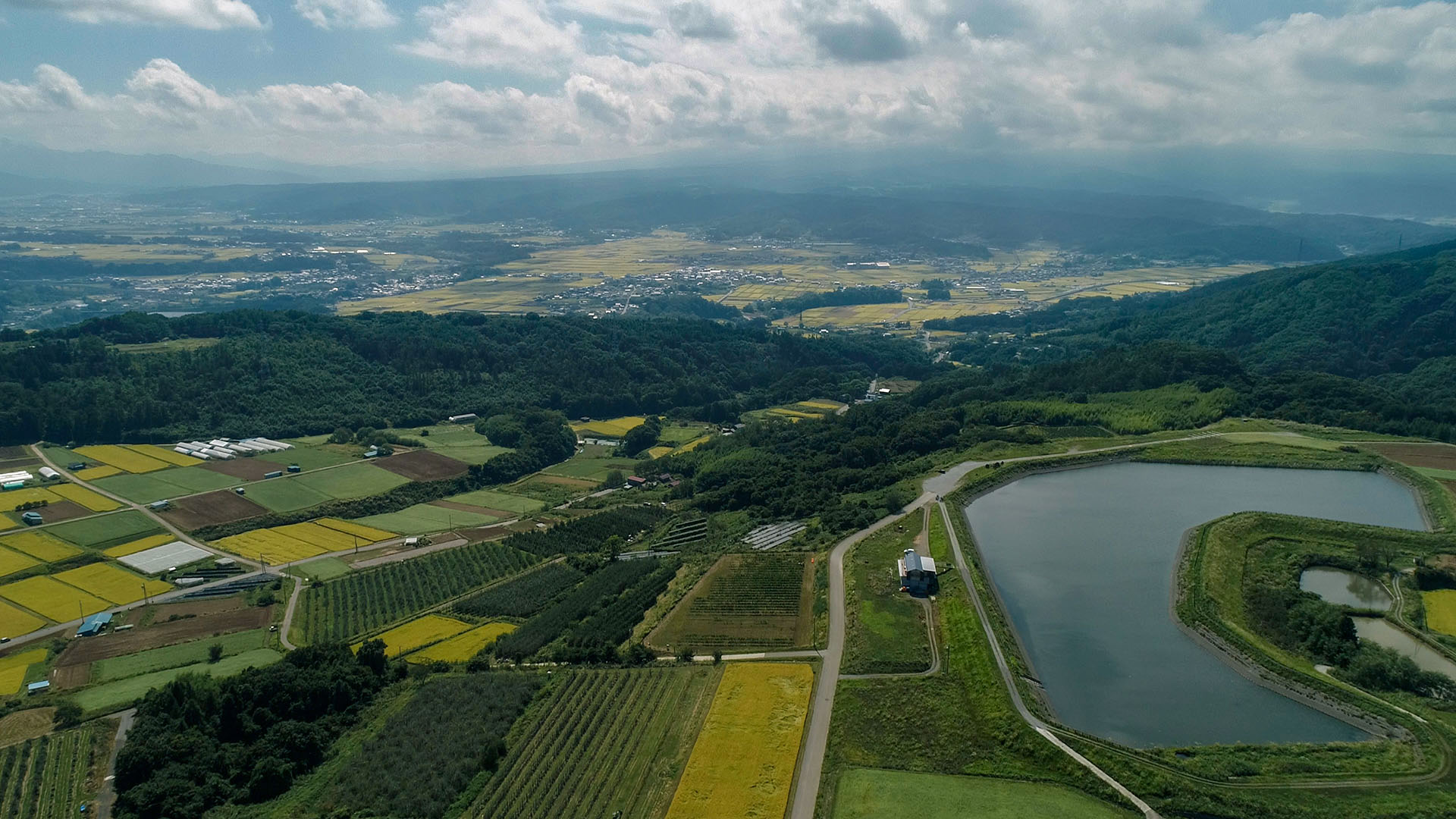
Mimakigahara is a large plateau nestled among gently rolling hills at an altitude of about 700-800 m. Caressed by a gentle breeze, you can turn all the way around to be greeted by magnificent views of Mt Tateshina and the Northern Japanese Alps, Mt Asama and the other mountains that dominate the Nagano landscape. Also known by its old name of Shinshu, Nagano is renowned for its plentiful and pure water. And although that may make you think of rivers, the water is actually held in ponds and reservoirs dotted around the prefecture, such as Lake Megami at Mt Tateshina. Mt Tateshina was previously called the mountain of the goddess (“megami” in Japanese), which is where the lake gets its name. It's an artificial lake built to store water for crop irrigation in Mimakigahara, making it a critical source of agricultural water.
Water from Lake Megami is piped to the large Minami Oike pond and allowed to warm up before being supplied to the fields. One vegetable grown in this area is a variety of potato called Hakuba Reisho. It's similar in quality to other potatoes grown widely in Japan, but the heavy red clay soil in Mimakigahara makes it turn white and particularly tasty, so it’s sold under its own brand name. It grows beautifully in the heavy clay soil, winning top prizes for its taste and composition for local farmers. This is also where Ikumi Kakegawa of the Mimaki Himawari Farm grows rice.
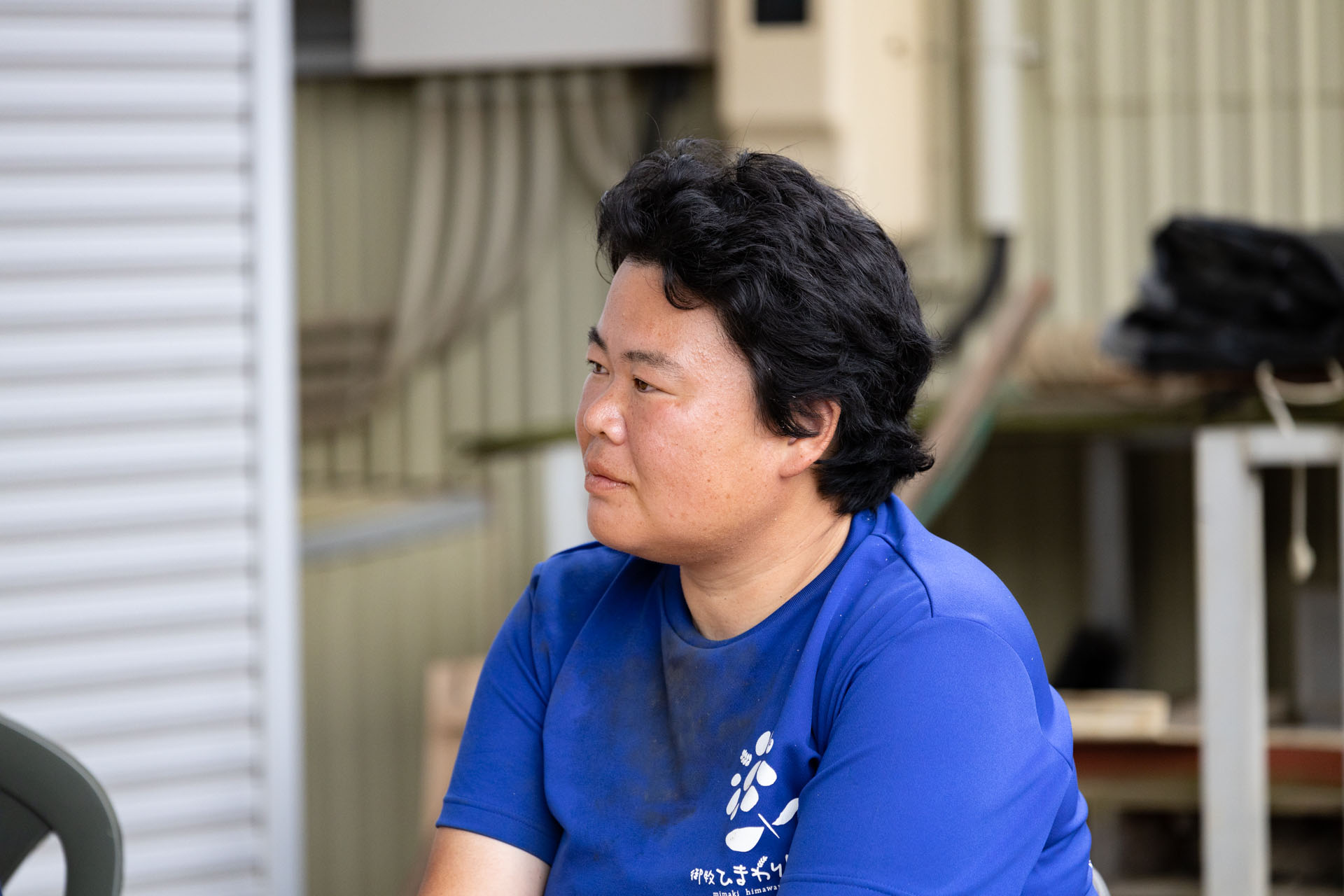
The Kakegawa family have run the local rice center and also farmed the land for generations. After joining the family business, daughter Ikumi gradually branched out, first concentrating on growing table rice such as Koshihikari and cherry tomatoes, then about five years ago she started growing sake rice. It all started when she was introduced to Kiyomi Otsuka, master brewer at Otsuka Sake Brewery, through the Komoro regional development group. Otsuka Sake Brewery used to make a sake called Asama Oroshi from the sake rice variety Kame no O, and asked Ikumi if she would grow it for them. The variety was discovered in 1893 in Yamagata Prefecture, just three stalks that survived cold weather. The plants were sent to a laboratory which managed to cultivate the strain in larger quantities. But then it fell out of favor in the 1970s, before being valiantly resurrected by a lone sake brewery in Niigata Prefecture and attracting attention. However, Kame no O proved so hard to grow and had such a poor yield that Ikumi was forced to give up after just one year.
No sake rice is easy to grow, and Asama Oroshi isn't an easy sake to brew,” Kiyomi points out. “But we still want to try again when we have a chance.” So perhaps Asama Oroshi would be revived once more, just like Kame no O.
The women making Komoro sake
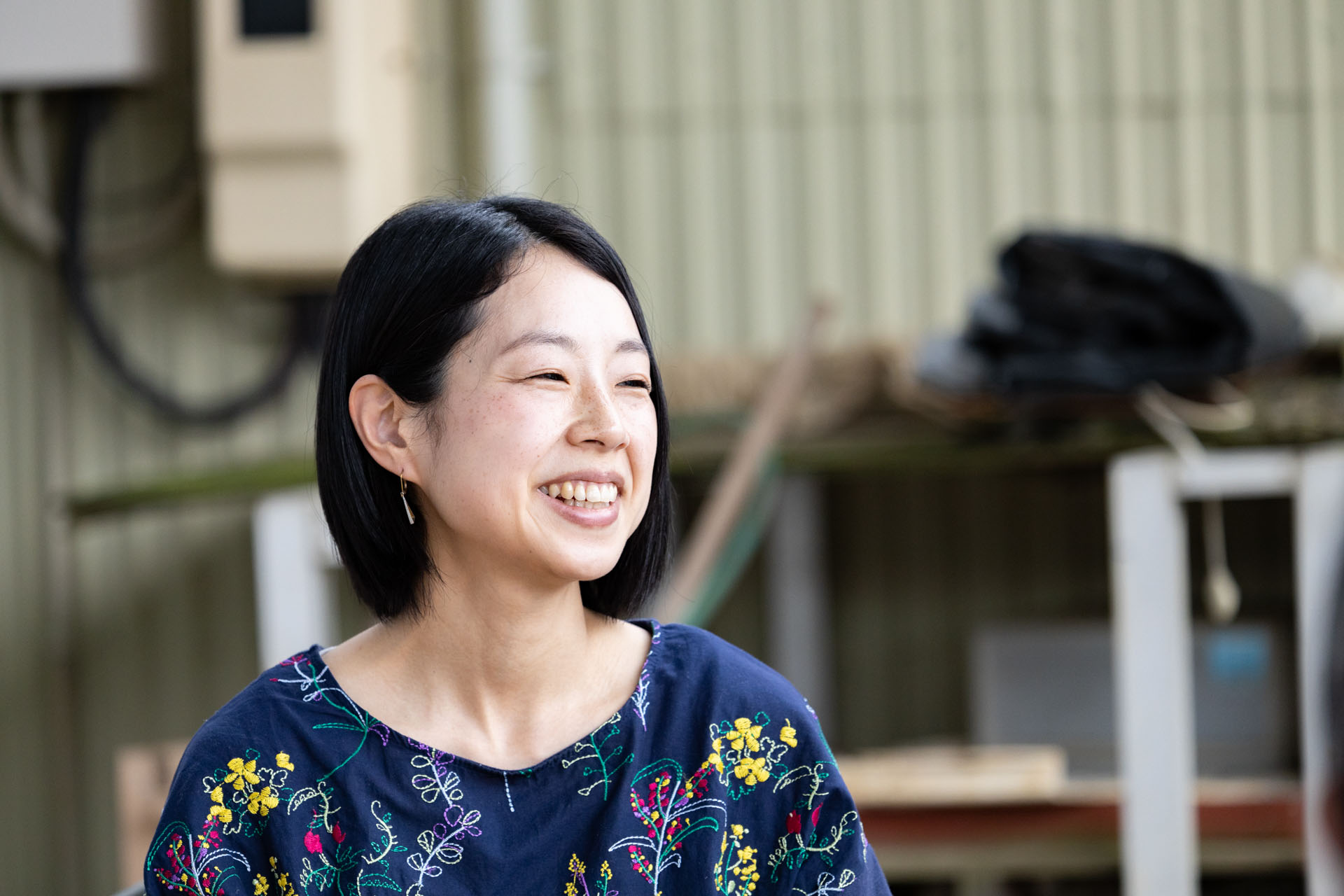
Otsuka Sake Brewery is the only sake brewery in Komoro. Takako Otsuka is the owner, and her daughter Kiyomi is the master brewer, which means the top two positions at the brewery are held by women. When 25 year old Kiyomi found out that the then-master brewer was thinking of retiring, she resolved to be the one to keep the brewery going. She learned while working under the previous master brewer until taking over at just 29, a feat of incredible discipline and effort.
The brewery's main brand is Asamadake, another name for Mt Asama. Most Nagano breweries have soft water but Otsuka Sake Brewery's water has the highest mineral content in the prefecture, giving Asamadake sake its unique character. The year after Ikumi gave up growing Kame no O at the Himawari Farm, she was contracted to grow Hitogokochi and Sankei Nishiki. “Our customers love the sake made with her Sankei Nishiki. I knew it would be good even as I was brewing with it,” Kiyomi insists.
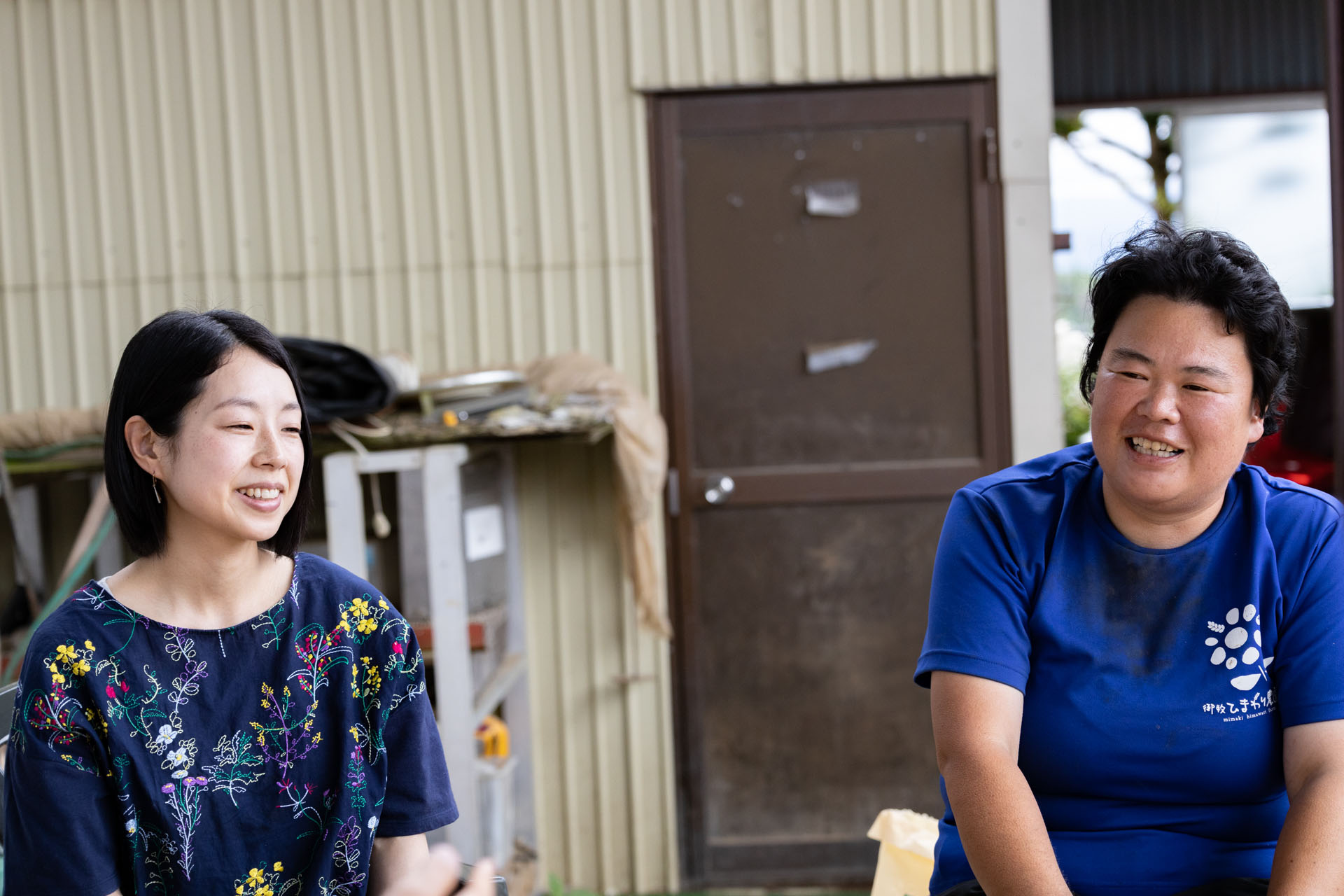
Himawari Farm now grows Sankei Nishiki as its only sake rice. Ikumi had little experience growing sake rice and faced problems such as the stalks splitting, but she could count on the support of the Himawari Farm rice center. The center takes newly threshed rice and dries out the moist hulls before removing them and selecting the best grains. They searched carefully for the best way to dry sake rice, and adapted their process to suit. Koyomi and Ikumi have only known each other for a few years, but Ikumi reflects that “I want to carry on this frank exchange of opinions with her so I can grow even better rice. I think that because we’re both women there many areas where we really understand each other.”
Kiyomi feels the same way. “We're the only brewery that can make Komoro sake from Komoro-grown rice. I want to keep on doing that, always.” So, these two women will undoubtedly carry on and make a sake that only they can.
Making Asamadake junmai ginjo Sankei Nishiki
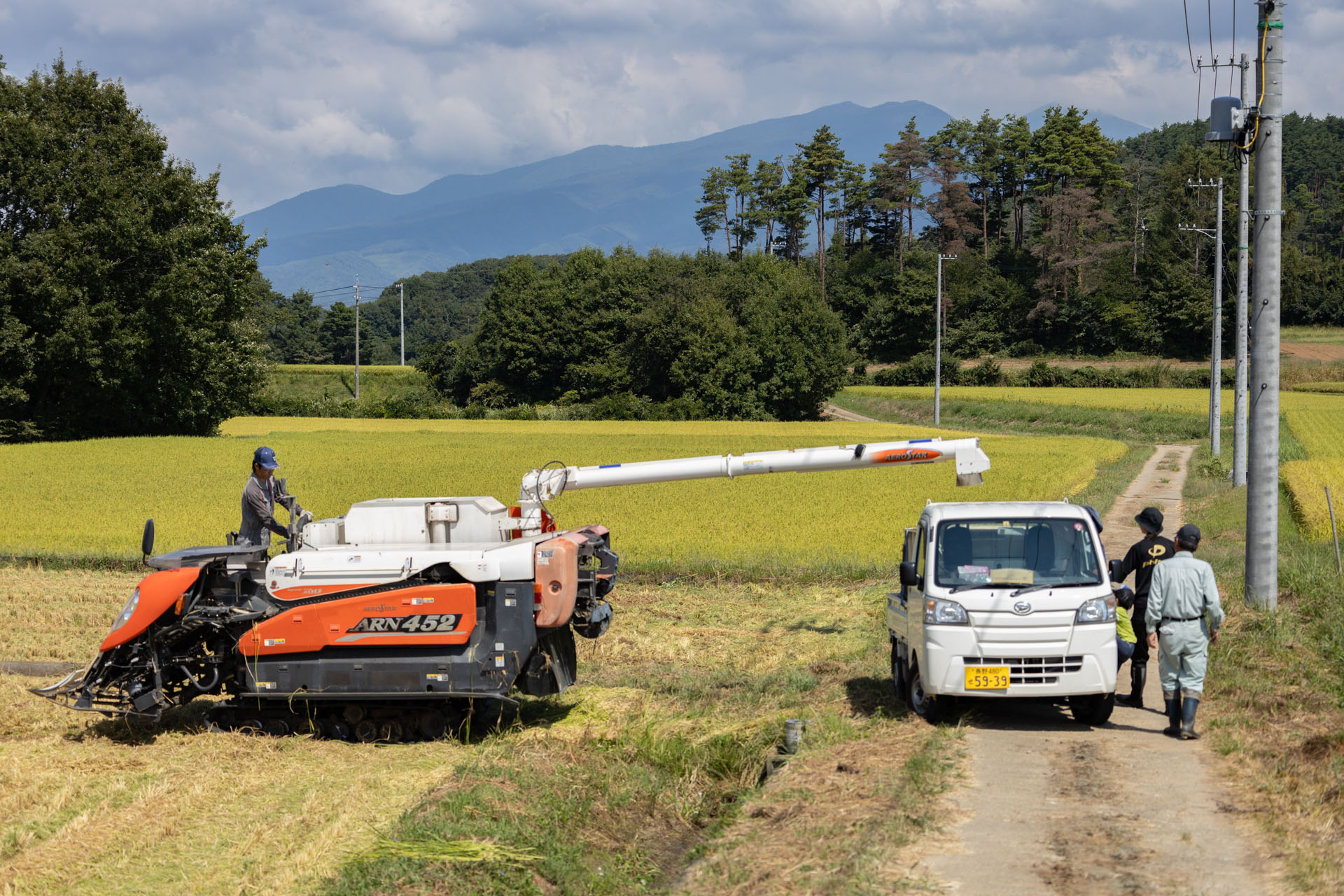
Asamadake junmai ginjo Sankei Nishiki is made from Ikumi's rice. Its aroma is fresh and somewhat youthful, reminiscent of lemonade, with a clear sweetness and smooth umami that fill the mouth. It has minerality and body but doesn't feel heavy, then finishes with delicate sweetness, making it very pleasant to drink. “Kiyomi is the one who brews the sake, of course, but I want to tell everyone that I’m the one who grew the rice!” Ikumi is just as excited for the sake to be released. But she's also well aware through her own experience that agriculture is facing serious issues with its ageing workforce and lack of manpower. Some work is difficult to do alone, and she tackles it with the future of her industry in mind, including by training young people and taking measures such as incorporation. “If the workforce keeps ageing as it is now, we’ll probably have to start taking care of other rice fields. People accept me right now thanks to my father’s support, but I don't want them to start wondering if I’ll always be able to do the job. I've already made up my mind, I’m going to do it!” Ikumi argues passionately. With such commitment and heartfelt love for farming, Ikumi is certain to make the future brighter for both farmers and sake brewers.

Asamadake junmai ginjo Sankei Nishiki
Made from the Sankei Nishiki rice Ikumi grows, Asamadake junmai ginjo Sankei Nishiki feels slightly young, with a fresh lemonade-like aroma that goes hand in hand with clean sweetness and smooth flavor that fills the mouth. The sake feels light despite its mineral notes and powerful flavors, and finishes with a pleasant lingering elegant sweetness.
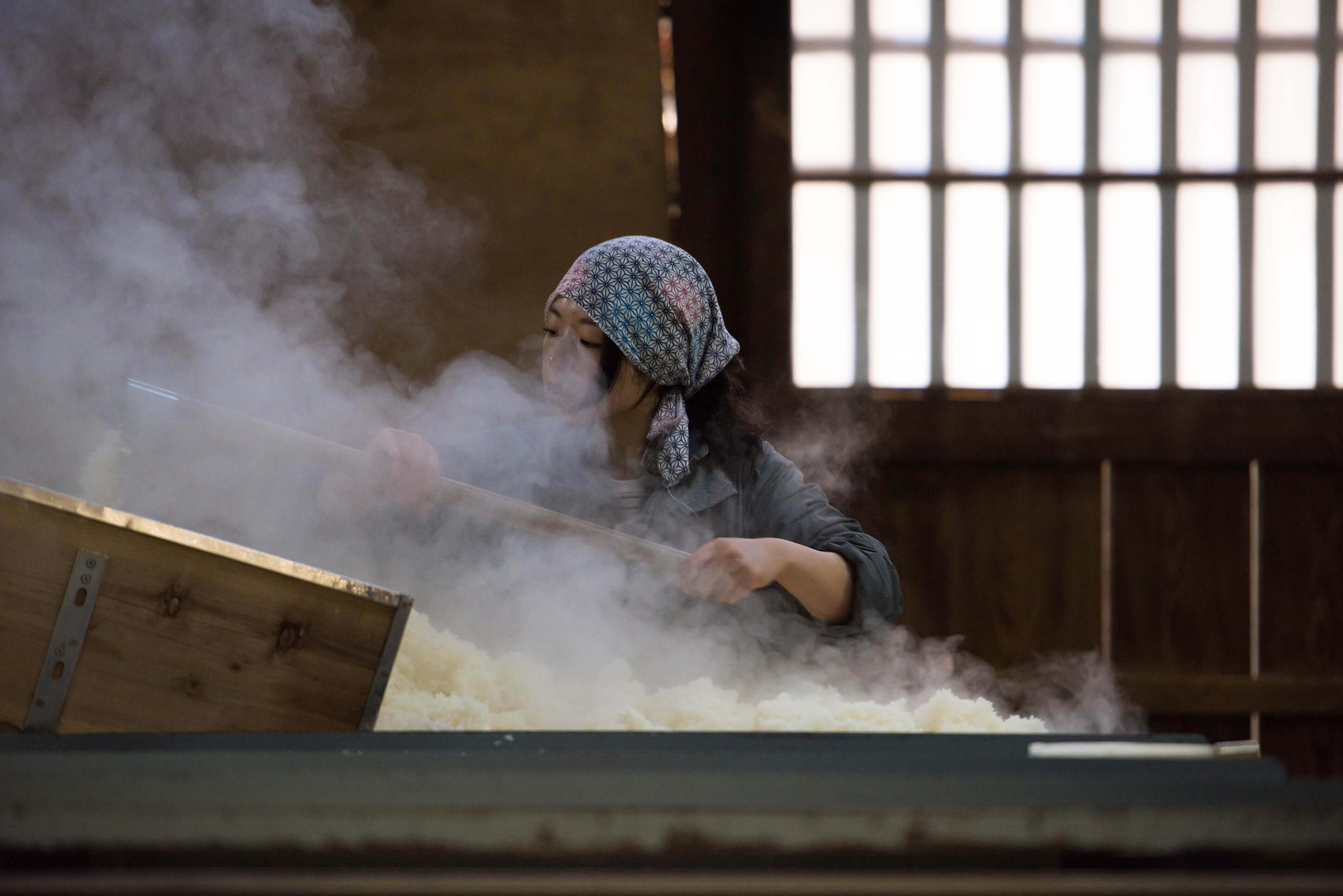

Otsuka Sake Brewery
Brewing in the Castle Town of Komoro
Founded in 1841, Otsuka Brewery is the only sake brewery in Komoro, a city developed from an old castle town. Komoro City issuitable for sake brewing due to its extremely cold climate. Takingadvantage of the cold weather, we have been brewing Asamadakebrand sake using rice from Nagano and underground water flowingfrom Mt. Asama. During his stay in Komoro, Toson Shimazaki (apoet active during the rst half the 1900s) wrote poetry aboutAsamadake (Mt. Asama).Asamadake is always at the dinner table, making your meal ahappy occasion. We are doing our best to create “sake that isperfect for every meal.”
2-1-24 Ote, Komoro City, Nagano Prefecture
TEL:0267-22-0002
Brewery tour : Not available